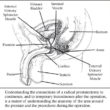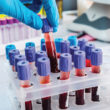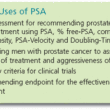What You Should Know; Why You Should Care
 For over five years, Quest has been reporting on new discoveries in the genetics of prostate cancer that continue to change the way researchers view the development of prostate cancer.
For over five years, Quest has been reporting on new discoveries in the genetics of prostate cancer that continue to change the way researchers view the development of prostate cancer.
In the last issue of Quest, we reported on two significant studies in the search for genetic causes of prostate cancer and said one of them showed a new model for research that would be “heralded as the single most significant discovery to date in studying the genetics of cancer.”
Now, two recently published studies, based upon this earlier work, are proving the prediction correct.
What’s Happening
Dr. Catalona, a collaborator in the research, explained that recent studies have reported an unprecedented and rapid chain of discoveries of DNA markers associated with the risk for developing prostate cancer.
“These discoveries have the potential to radically change the way prostate cancer is diagnosed, treated, and ultimately prevented. And they are changing the way scientists look at the genetics of cancer in general, “ Dr. Catalona said.
In one project, a group of scientists and doctors from around the world, including Dr. Catalona, participated in a study with an Icelandic company, deCODE Genetics, to identify genetic risks for prostate cancer.
This study, published in 2006, confirmed the same risk marker, located on chromosome 8q24 in Icelandic, Swedish and United States men.
Although genetics was thought to be a risk factor in developing prostate cancer, no studies, until this one, definitely proved a genetic connection.
This deCODE study was the first to discover a reproducible genetic cause of prostate cancer susceptibility. Now, numerous scientists at respected research institutions have responded to this finding with further studies.
Dr. Catalona compared the genetic research to solving a jigsaw puzzle.
“The most difficult task is to figure out where that first piece goes. Then, every piece you put in gets easier than the one before it. We are in the era of identifying the pieces of the puzzle, and it almost always goes faster than you think it would once you start putting the pieces into place. All these findings are ‘new pieces of the puzzle’ and they show how important future studies are and why they need to be supported.”
New Puzzle Pieces: One Study
The most recent paper by Julius Gudmundsson, published in Nature Genetics (February 2008), reported on additional studies using findings and genetic material from the earlier multi-institutional collaboration.
Dr. Catalona is co-author of this recent study, and his Northwestern samples were used to validate these new gene discoveries.
It announced the discovery of two new susceptibility loci on the short arm of chromosome 2 and on chromosome X.
These two discoveries of genetic variants connected to prostate cancer risk also introduced two new important relationships:
1. Possible Connection to Aggressiveness
The 2p15 variant* showed a significantly stronger association with more aggressive, rather than less aggressive, forms of prostate cancer.
“We have known for awhile that some forms of prostate cancer are aggressive and life threatening and others are not. The problem has been, and continues to be, that no one has a means of identifying which is which,” Catalona said.
He explained that a primary goal in this research is to find associations between genetics and aggressiveness of tumor cells. Finding these genetic markers would hopefully provide the information to develop diagnostic tests that let doctors know which men are most likely to develop an aggressive form of prostate cancer.
“The markers would help doctors decide how closely to follow men at high risk and how to treat individual prostate cancer cases. This find is our first possible success,” Catalona said.
2. Possible Connection to the Mother
Another area of investigation related to previous studies on prostate cancer risk in relatives of affected men reported that brothers are at greater risk compared to fathers and sons. The finding suggested that a genetic link to prostate cancer might be X-linked (carried on the mother’s genetic contributions).
In this paper, Gudmundsson reports that, so far, the strongest association for prostate cancer is a variant* located on the X chromosome.
Dr. Catalona said that for some time, his studies suggested a risk connection between women in the family with breast cancer and men with prostate cancer. The connection was apparent enough that he began to include women’s histories in his familial prostate cancer projects.
“Now, these genetic studies are beginning to confirm the connection. It makes for quite a change in thinking,” Catalona said.
New Genetic Connections: Second Study
The second study producing a stir in the prostate cancer research community was published in the New England Journal of Medicine (January 16, 2008).
In this paper, (S. Lilly Zheng, MD) researchers reported that being born with a combination of risk variations, rather than one genetic change, appears to set the stage for the development of cancer.
They found variants in five chromosomal regions** – three at 8q24 and one each at 17q12 and 17q24.3 – seemingly associated with prostate cancer.
Taken separately, each has only a moderate association but when they are evident in combination, the association is statistically stronger.
Four of th five genes in this study were discovered by deCODE in reearch collaboration with Dr. Catalona and other participating scientists.
Maybe a Connection to Genetic Combinations
The conclusion is that SNPs* or variants found in five chromosomal regions plus a family history of prostate cancer have a cumulative and significant association with prostate cancer.
These DNA variants seem to set increased prostate cancer risk, but may do so only in specific combination with each other and/or in the context of a positive family history of prostate cancer and specific environmental exposures.
For the time being, how these areas interact with each other is a mystery. In fact, in this study, none of the five SNPs were significantly associated with the aggressiveness of prostate cancer, the Gleason score, the presence or absence of family history, the PSA at diagnosis or the age at diagnosis.
Because the presence of the five prostate-cancer-associated SNPS was independent of PSA levels, the journal article pointed out that “…some men with low PSA levels may have an increased risk of prostate cancer if they carry one or more of the prostate-cancer associated genotypes described.”
“The information in this study can provide some help with deciding who should be screened early, but the findings don’t show a correlation with or prediction for clinical outcomes,” Catalona said.
Another significant finding was that the DNA analyzed is constitutional, which means men are born with these risk variants. They are not life-time mutations. What initiates the action that starts the development of the cancer is not apparent.
So many mysteries still left. So many questions still unanswered.
The research has opened new doors and shut some old ones. But the rooms have yet to be explored or understood. The findings give new directions to research and undo a lot of previous assumptions. But they have yet to answer important biological questions about how and why they work in individuals’ bodies.
“Having accomplished the goal of early detection, now we need to find out what causes prostate cancer; what new, less invasive techniques can treat it; and ultimately, how it can be prevented. The answers are going to come from genetic studies,” Catalona said.
*SNPs: are a change *(a variant) in which a single base in the DNA differs from the usual base at that position. They occur when a single nucleotide (building block of DNA) is replaced with another.
There are four nucleotides in DNA. Each nucleotide contains a base: adenine (A), guanine (G), cytosine (C), or thymine (T).
Researchers look at specific DNA codes of known genes and at variations within these genes. Most people have seen the very long and involved list of alphabet letters that represent a genetic code. In one area, a part of a code might be CCATT but in a substantial number of men with prostate cancer, that code is CAATT.
The place where the changed code is spotted is the variant. And it has a specific address.
Researchers, though advanced technology, look for the common variants in men with prostate cancer by comparing their genetic codes to men without prostate cancer.
**Genetic Addresses: Researchers give addresses to identify genetic markers. Just as in postal service addresses, they start out general, (country), and get more and more specific (city, zip code, street, house, etc). The numbers for the genetic markers begin with regions and then are identified by their most specific known address.











